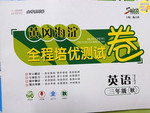题目内容
Somehow Rey had managed to struggle free from the rope around his neck, after being left to die a slow death as punishment for being a bad Spanish greyhound(猎狗).
It is believed that 50,000 greyhounds are killed by their owners in
But Rey's intended fate(命运) was, even within the levels of cruelty usually shown to Spanish hunting dogs, especially cruel. The rope around his neck had been set at a height so that his front paws could not touch the ground, meaning that he was intended to stand on his back legs until he was too tired to support himself. When his legs finally became too tired, the rope should have done its work.
"They call it the typewriting death, because the dog's back legs struggled against the ground and make the clicking sound of a typewriter," said Albert Sorde, of the SOS Galgos greyhound rescue group. "It is a punishment for greyhounds that are thought to have made their owners lose face. "
"Rey's throat was severely damaged but we managed to find a vet to operate and, though it was expensive, he survived," he said.
Greyhounds in Spain are used for hunting hares(野兔). "The dogs are meant to imitate the swerves(转向)of the hares," said Sorde. "Those who don't, and make their owners look bad, are called ' dirty greyhounds' and are most likely to be killed by the typewriter method. "
63. Rey was intended to be killed by .
A. Kicking B. burying C. hanging D. drowning
64. The underlined word "vet" in (Paragraph 5) probably means “_________”.
A. animal doctor B. ambulance
C. animal medicine D. equipment
65. What can you infer from the passage?
A. Dogs are not kept as pets in
B. Rey was punished because he had not been loyal to his owner.
C. The typewriting death is named because a typewriter is used in the punishment.
D. Rey didn’t behave very well in the hunting.
66. The passage mainly tells the readers about _________.
A. the cruel killing of dogs in
B. how Rey was saved by rescuers
C. how Spanish dogs hunt hares
D. the fate of the dogs in

 名牌学校分层周周测系列答案
名牌学校分层周周测系列答案 黄冈海淀全程培优测试卷系列答案
黄冈海淀全程培优测试卷系列答案If you want to teach your children how to say sorry, you must be good at saying it yourself, especially to your own children. But how you say it can be quite tricky.
If you say to your children "I'm sorry I got angry with you, but...", what follows that "but" can make the apology ineffective:"I had a bad day" or "your noise was giving me a headache" leaves the person who has been injured feeling that he should be apologizing for his bad behavior in expecting an apology.
Another means by which peaple appear to apologize without actually doing so is to say "I'm sorry you're upset"; this suggests that you are somehow at fault for allowing yourself to get upset by what the other person has done.
Then there is the general, all-covering apology, which avoids the necessity of identifying a specific act that is particularly hurtful or insulting, and which the person who is apologizing should promise never to do again. Saying "I'm useless as a parent" does not commit a person to any specific improvement.
These pseudo-apologies(假道歉) are used by people who believe saying sorry shows weakness. Parents who wish to teach their children to apologize should see it as a sign of strength, and therefore not take these pseudo-apologies.
But even when presented with examples of real apology, childfen still need help to become aware of the complexities of saying sorry. A three-year-old might need help in un- derstanding that other children feel pain just as he does, and that hitting a playmate over the head with a heavy toy requires an apology. A six-year-old might need reminding that spoiling other children's expectations can require an apology. A 12-year-old might need to be shown that destroying the biscuit tin without asking permission is acceptable, but that
borrowing a parent's clothes without permission is not.
【小题1】If a mother adds "but" to an apology, ________.
| A.the child may find the apology easier to accept |
| B.the child may feel that he owes her an apology |
| C. she promises never to do it again |
| D.she does not realize that the child has been hurt |
| A.You have good reason to get upset |
| B.I apologize for hurting your feelings |
| C.I am at fault for making you upset |
| D.I am aware you are upset, but I am not to blame |
| A. it is not clear and ineffective |
| B. it is hurtful and insulting |
| C. it may make the other person feel faulty |
| D.it gets one into the habit of making empty promises . |
| A.the complexities involved should be ignored |
| B.parents need to set them a good example |
| C.their ages should be taken into account |
| D.parents should be patient and tolerant |
| A.a sign of social,progress |
| B.not as simple as it seems |
| C.not necessary among family members. |
| D.a social issue calling for immediate attention |